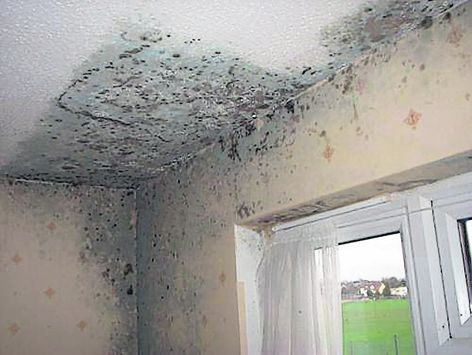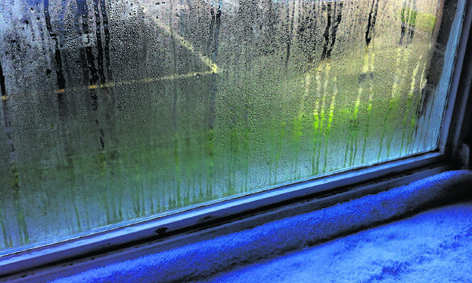As the dark nights take hold, people tend to spend more time in the house going about their everyday life – drying clothes indoors, boiling kettles, cooking.
However, what people don’t realise is that all of these activities add moisture to the air, leading to problems like damp mould, which can be detrimental to health.
Research shows that 50% of all illness is caused or aggravated by poor indoor air quality. Medical professionals have also discovered that damp housing is clearly related to respiratory conditions in both adults and children. It has been proven that the average family of four can add up to 112 pints of moisture to the air every week, adding significantly to the condensation build-up within a home which is the main cause of mould growth.
Specialist ventilation surveyor for Enviroventcorrect, Scott MacKenzie, said that at this time of year, people start to use their heating again, close windows and dry clothes on radiators, increasing the build up of moisture, which leads to the growth of mould.
 He said: “The way people use and upgrade a building can have an adverse effect on how susceptible it is to having ventilation problems. For example, recently there has been an increase in the number of homeowners adding loft and cavity wall insulation.
He said: “The way people use and upgrade a building can have an adverse effect on how susceptible it is to having ventilation problems. For example, recently there has been an increase in the number of homeowners adding loft and cavity wall insulation.
“This is an excellent improvement to make, in order to retain heat, but many people don’t consider the adverse affect it will have on the natural ventilation of a property.
“Many people start to notice dark and wet areas appearing on walls, which they believe is rising damp. However, in the vast majority of cases, it is not rising damp, but a condensation and mould issue. This is because adding insulation, installing new windows and doors, and sealing up a home without improving the flow of air through the property can trap moisture. This encourages damp and mould which will build on cold walls and ceilings, it can also damage clothes in cupboards.
“It can take as little as six hours for mould to build on a damp wall. Many people leave doors and windows wide open in order to encourage fresh air into the home. However, this can lead to security risks and is a huge loss of heat, and a waste of money.
“The circulation of air is incredibly important so if people don’t have mechanical ventilation in place the only option is to open a window temporarily to help. Installing appropriate ventilation solutions over time could save you money, will lead to a better quality of life and will improve health.”
